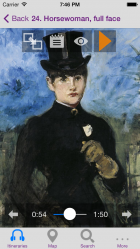
Chagall was a Russian Surrealist painter, born in Vitebsk, into a Jewish family. This fact was to have a strong influence on his painting, as his pictures contain many Hebrew legends, such as the Fiddler on the Roof.
In 1910 he moved to Paris, where he adapted his style to the new art movements. He used colour in an irrational way; his pictures have no perspective; his houses and characters are the right way up or upside down; his animals lose their original size, either shrinking, or becoming larger than the human figures, as in this picture.
In 1914, at the start of the First World War, he returned to Russia. But shortly afterwards he left again because the Soviet regime, victorious in 1917, would only accept Realist painting. The persecution of Jews during the Second World War forced him to move to the United States, where he made two stained glass windows for the United Nations building in New York. His work also includes the painting of the ceiling of the Paris Opera.
His lyrical style moved away from the spirit of Surrealism, towards a more and more personal style of painting.
In The Cockerel, which he painted in 1929, he repeated his most characteristic features; irrational colour and the disproportionate size of the animal and the woman riding it, but always with an undercurrent of gentleness. The woman is hugging the bird like a lover. In the background, another pair of lovers are gently rowing in a boat.
(c) (R) 2013, MUSMon com S.L.
Text (a) Catalina Serrano Romero
Photo: Portrait of Marc Chagall, 1941 (a) Source: Wikipedia (As the restrictions on this collection expired in 1986, the Library of Congress belives this image is in the public domain)
Independently produced by MUSMon.com, the audio guide for the Thyssen-Bornemisza Museum offers you a wide-ranging, light-hearted and educational tour of one of Spain’s most outstanding art museums. It contains 90 minutes of commentary, illustrated with over 52 high-quality images, so you won’t miss a single detail during your visit.
We will guide you on your journey through the history of painting. +info




































































